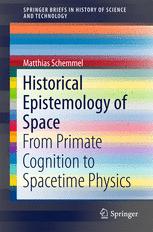

Most ebook files are in PDF format, so you can easily read them using various software such as Foxit Reader or directly on the Google Chrome browser.
Some ebook files are released by publishers in other formats such as .awz, .mobi, .epub, .fb2, etc. You may need to install specific software to read these formats on mobile/PC, such as Calibre.
Please read the tutorial at this link: https://ebookbell.com/faq
We offer FREE conversion to the popular formats you request; however, this may take some time. Therefore, right after payment, please email us, and we will try to provide the service as quickly as possible.
For some exceptional file formats or broken links (if any), please refrain from opening any disputes. Instead, email us first, and we will try to assist within a maximum of 6 hours.
EbookBell Team

4.1
40 reviewsThis monograph investigates the development of human spatial knowledge by analyzing its elementary structures and studying how it is further shaped by various societal conditions. By taking a thoroughly historical perspective on knowledge and integrating results from various disciplines, this work throws new light on long-standing problems in epistemology such as the relation between experience and preformed structures of cognition.
What do the orientation of apes and the theory of relativity have to do with each other? Readers will learn how different forms of spatial thinking are related in a long-term history of knowledge. Scientific concepts of space such as Newton’s absolute space or Einstein’s curved spacetime are shown to be rooted in pre-scientific structures of knowledge, while at the same time enabling the integration of an ever expanding corpus of experiential knowledge.
This work addresses all readers interested in questions of epistemology, in particular philosophers and historians of science. It integrates forms of spatial knowledge from disciplines including anthropology, developmental psychology and cognitive sciences, amongst others.